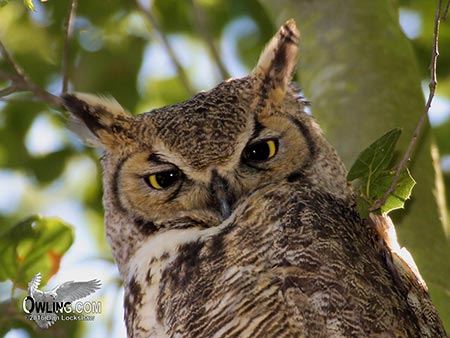
Great Horned Owl
A Reference for North and Central American Owls
The Great Horned Owl can be found over most of North and Central America and some of South America. It is a very large and powerful owl. In North America only the Snowy Owl is more massive. It varies in color and size between subspecies but its field marks are constant. Here you will find photos, recordings, and a brief field notes section to help identify and enjoy this beautiful owl.
A more in depth write up can be found in its natural history page.
To jump immediately to any of these sections use the Page Tabs below.
This is the classic three to five note adult Great Horned Owl’s vocalization, soft hoots with a stuttering rhythm: hoo-h’HOO-hoo-hoo.
A Great Horned Owl’s juvenal screech. A second juvenal is heard in the background also.
This is a female and male calling back and forth. The sequence starts with the female, then the male and ends with the female.
FIELD NOTES
Great Horned Owl – Bubo virginianus
The Great Horned Owl is one of the most powerful of North American Owls (Denver Holt, founder of The Ninepipes Center for Wildlife Research and Education, assures me that the Snowy Owl is the most powerful… he has been attacked by both!). Both Snowy and Great Gray Owls are larger in size but only the Snowy is more massive (greater average weight).
The adult Great Horned is also the only large owl with prominent ear tufts. The larger size, bulky shape and white chest help to differentiate it from the similarly colored Long-eared Owl. The sexes are alike although the females have a slightly higher pitched and shorter sequence of notes in their call. In contrast with the adults, the juvenile Great Horned may not show ear tufts and call with a “screech” reminiscent of a Barn Owl. Other juvenile owls also screech so identification by the sound of the juveniles can be more challenging. Young Barred Owls have a very similar screech.
Length is 22″ (same size as a Red-tailed Hawk), the iris of the eyes are yellow and the bill is slate-black. The text in the photos section discusses field marks.
